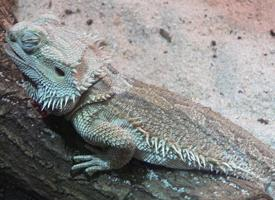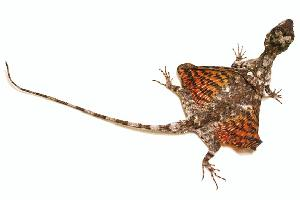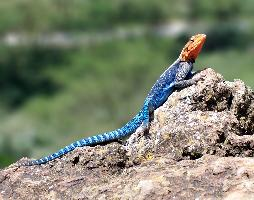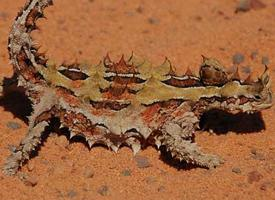
Známé také jako
- Agama vousatá
Biologická data
| Délka života | 10 r |
|---|
Popis zvířete
The Central Bearded Dragon (Pogona vitticeps) is a fascinating reptile native to the arid, rocky, and semi-desert regions and woodlands of central Australia. This species, belonging to the family Agamidae, has captivated the hearts of reptile enthusiasts and pet owners worldwide, thanks to its docile nature, distinctive appearance, and relatively easy care requirements.Adult Central Bearded Dragons can reach lengths of up to 24 inches (about 60 cm), including their tail, with males generally being larger than females. Their robust bodies are supported by strong, clawed limbs that are well-adapted for climbing and digging. One of the most striking features of the Central Bearded Dragon is its "beard" – a spiky pouch of skin under the jaw that can puff up and turn black when the animal is threatened, displaying dominance, or during mating rituals. This beard, along with their ability to flatten their bodies to appear larger, helps deter predators and is a key aspect of their communication.
The coloration of Central Bearded Dragons varies widely, with hues ranging from light tan to dark brown, often patterned with orange, red, or yellow, especially across their back and head. These colors can change based on the temperature, the dragon's mood, and its health status. For example, they may darken their skin to absorb more heat or lighten it to cool down.
Central Bearded Dragons are diurnal creatures, meaning they are active during the day. Their diet is omnivorous, consisting of a variety of foods including insects, small mammals, other reptiles, flowers, and leafy greens. In captivity, their diet can be easily replicated with commercially available reptile food, supplemented with fresh vegetables and occasional live feed.
Reproduction in Central Bearded Dragons involves a fascinating display of rituals and behaviors. Males will show off their beards, bob their heads, and wave their arms to attract females and assert dominance. Females lay clutches of up to 25 eggs, which they bury in warm sand or soil to incubate. The eggs hatch after 55-75 days, depending on temperature conditions.
In the wild, these reptiles are adept climbers and often bask on branches, rocks, or in bushes near the ground to regulate their body temperature. They possess a unique adaptation for their arid habitat: a lateral groove between their nostrils and the corner of their mouth that allows them to collect and direct water from any part of their body to their mouth.
As pets, Central Bearded Dragons require a carefully maintained environment that mimics their natural habitat. This includes a spacious terrarium equipped with heating and UVB lighting, proper substrate, and areas for basking, hiding, and climbing. Their friendly and interactive nature makes them excellent pets, but they do require a commitment to their specific care needs, including temperature regulation, diet, and regular veterinary check-ups.
The Central Bearded Dragon is not only a subject of fascination in the pet trade but also in scientific research, contributing to our understanding of reptilian physiology, behavior, and ecology. Despite their resilience, the species faces threats from habitat loss and fragmentation, predation by introduced species, and the impacts of climate change. Conservation efforts and responsible pet ownership are crucial to ensuring the survival of these remarkable reptiles in the wild and in homes around the world.
Podobná zvířata
Nové fotografie zvířat
Top 10 zvířat
- Chinese water dragon (Physignathus cocincinus)
- Dolphin gull (Leucophaeus scoresbii)
- Galápagos tortoise (Geochelone nigra complex)
- Japanese macaque (Macaca fuscata)
- Colombian red howler (Alouatta seniculus)
- Sea urchins (Echinoidea)
- Barbary macaque (Macaca sylvanus)
- Diana monkey (Cercopithecus diana)
- Moustached guenon (Cercopithecus cephus)
- Guinea baboon (Papio papio)


